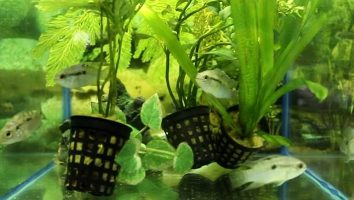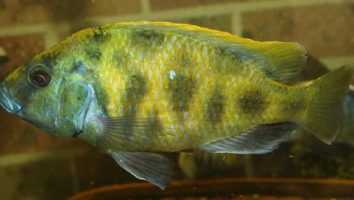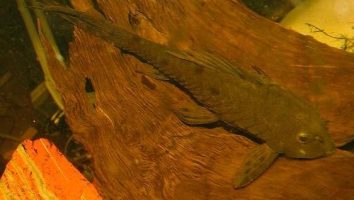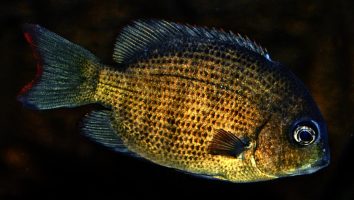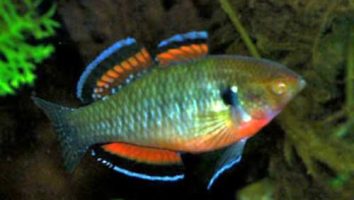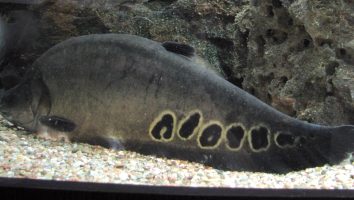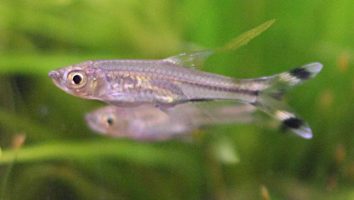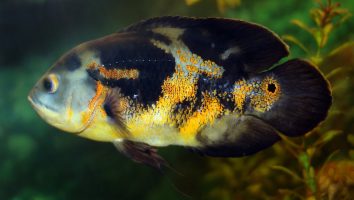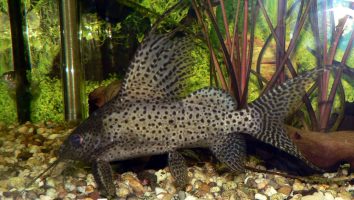Corydoras julii is a peaceful and active freshwater fish that is perfect for beginners. This species is also known as the julii cory or the leopard corydoras.
Corydoras julii is a small fish that only grows to be about 2 inches long. They are brown with black spots and have a white belly.
This species is a bottom dweller and does best in a tank with plenty of hiding places. Corydoras julii is a peaceful fish that does well with other peaceful fish.
This species is easy to care for and is a great addition to any freshwater tank.
Table of contents
Species overview
Julii corydoras (Corydoras julii) are a small species of freshwater fish that are native to South America. They are found in a wide range of habitats, from slow-moving rivers to fast-flowing streams.
One of the most distinctive features of this fish is the black stripe that runs along its body. This stripe is bordered by a white stripe on each side, which really makes the fish stand out.
Despite their small size, Julii corydoras are actually quite hardy and can adapt to a wide range of water conditions. This makes them a popular choice for beginner aquarists.
Although they are a peaceful species, Julii corydoras are known to be quite shy. They prefer to stay in groups and will often hide if they feel threatened.
Appearance

Julii Corydoras are one of the more popular species of Corydoras in the aquarium trade. This is due to their unique coloration and patterning.
The body of the Julii Corydoras is dark brown to black. This color is broken up by a series of white or light-colored stripes that run vertically down the fish.
The number of stripes varies from individual to individual but is usually between four and six. Some specimens may have a seventh stripe that runs along the base of the caudal peduncle.
The fins on this fish are relatively clear with a slight tinge of brown. The dorsal fin is slightly taller than the rest and begins about two-thirds of the way back on the body.
The caudal and anal fins are both forked and roughly the same size. The pectoral fins are shorter and begin closer to the head of the fish.
One of the most distinguishing features of this fish is the barbels on their face. Julii Corydoras have four barbels, two on each side of their mouths. These are used to help them find food in the substrate.
Lifespan
The lifespan of a Julii corydoras is around 5 to 8 years. This is a pretty good lifespan for a fish, especially one that is so active and playful.
As with any fish, there are a number of factors that can impact the lifespan of a Julii corydoras. Poor water quality, stress from bad tank mates, or a suboptimal diet can all lead to a shorter lifespan.
Size
Julii Corydoras reach a maximum size of around 2.5 inches in length. These little guys are one of the smaller species of Corydoras and make a great addition to any nano tank setup.
Tank
Tank Size
The minimum tank size for Julii corydoras is 20 gallons. If you’re looking for a schooling fish, we recommend at least 3 to 5 fish so you might want to consider a larger tank.
As with all corydoras, these fish prefer to live in groups so the more the merrier. If you have the space, we recommend going for a larger tank so you can have a bigger school of fish. Not only will they be happier but it will also help to keep the water quality in the tank higher.
Water Parameters
Julii corydoras are a bit more particular about their water parameters than some of the other corydoras species. They prefer a neutral to slightly acidic pH with a water hardness on the softer side.
While they can tolerate a wide range of temperatures, they prefer cooler water in the 72-78 degree Fahrenheit range.
As with all corydoras, it’s important to maintain a consistent environment. These fish are sensitive to sudden changes and will do best in a tank with stable water conditions.
To help create a healthy environment for your Julii corydoras, aim for the following water parameters.
- Water temperature: 72 to 78 degrees Fahrenheit
- pH levels: 6.5 to 7.2
- Water hardness: 5 to 12 dGH
- Alkalinity Levels: 4-8 dKH
What To Put In Their Tank
Julii corydoras are a popular freshwater fish that are known for being peaceful and easy to care for.
When it comes to setting up their tank, there are a few key things that you’ll want to keep in mind.
The first is that these fish are bottom dwellers. This means that the substrate you choose for their tank should be soft and smooth. Anything too sharp can damage their delicate barbels (the whisker-like appendages on their face).
The second thing to consider is that Julii corydoras are a schooling fish. This means they do best when they’re kept in groups of 6 or more. Because of this, you’ll want to make sure their tank is big enough to accommodate them.
A 30-gallon tank is the minimum we’d recommend for a group of these fish. If you’re keeping them in a larger tank then you can get away with a smaller group.
When it comes to decorations, these fish are pretty flexible. They’re not picky about plants or rocks, so feel free to get creative. Just make sure there are plenty of hiding spots for them to feel safe.
Some good options include driftwood, caves, or even PVC pipes.
Common Diseases
Julii corydoras are pretty hardy fish, so they don’t often get sick. However, there are still a few diseases that you should be aware of if you’re keeping these fish.
The most common disease that affects Julii corydoras is ich. This is a pretty common freshwater disease that can affect a variety of fish species.
The main symptom of ich is the presence of white spots on the body, fins, and gills of the fish. If you notice this, it’s important to take action immediately and begin treatment.
If left untreated, ich can be fatal. However, it’s usually fairly easy to treat if you catch it early.
Another disease that can affect Julii corydoras is a bacterial infection. This is usually the result of poor water quality and can manifest itself in a number of ways.
The most common symptom is increased mucus production, but you might also see ulcers, fin rot, or cloudy eyes. If you notice any of these symptoms, it’s important to take action immediately and improve the water quality in your tank.
Behavior & Temperament
The Julii corydoras is a peaceful fish that does well in community tanks. They are shy fish that like to stay hidden most of the time. They are active at night and will often spend their days hiding in plants or in the aquarium decorations.
Julii corydoras are social fish and do best when kept in groups. They are known to school with other Julii corydoras, but will also school with other corydoras species. When kept in groups, they are much more active and will often swim in the middle of the tank rather than hiding all the time.
Julii corydoras are not aggressive fish and get along well with most tank mates. They are peaceful fish that will not bother other fish in the tank. The only time they may become aggressive is if they are not getting enough food.
Tank Mates
Corydoras julii are a peaceful species that does well in community tanks. They’re not aggressive and can get along with most other fish.
These bottom-dwelling fish are also relatively small. As a result, they make good tank mates for smaller fish that occupy the middle and top of the water column.
Here are some compatible species that make good tank mates for Corydoras julii:
*Corydoras habrosus
*Corydoras panda
Breeding
Julii corydoras are a bit more difficult to breed in captivity than some other species. But with the right set up, you can successfully reproduce this species.
First, you need to identify the males and females. Males are typically smaller and have more prominent fins.
Next, you need to set up a breeding tank. It should hold at least 20 gallons of water and have soft, slightly acidic water. Add some live plants and a few pieces of driftwood for decoration.
Once the tank is set up, you can add the fish. Start with two males for every female. Then, raise the water temperature to about 80 degrees Fahrenheit.
After a few days, the females will start to lay their eggs. The males will then fertilize them.
Once the eggs are fertilized, the parents will eat them. So it’s important to remove the adults as soon as the eggs are laid.
You can then raise the fry in a separate tank. Feed them live foods at first, then gradually introduce them to flakes and pellets.
Conclusion
The Julii Corydoras is an excellent fish for beginner aquarists. They are easy to care for and are very peaceful, making them a great addition to community tanks. They are also very active fish, which can be a lot of fun to watch. Overall, we highly recommend the Julii Corydoras for anyone looking for a low-maintenance fish that is still fun and interesting to watch.

